Specialized Turbo Levo Gen 3 Review | Buy Now, or Wait For Next Version?
The next gen model will no doubt find ways to up the ante, but are the discounts of the previous gen the more compelling buy?
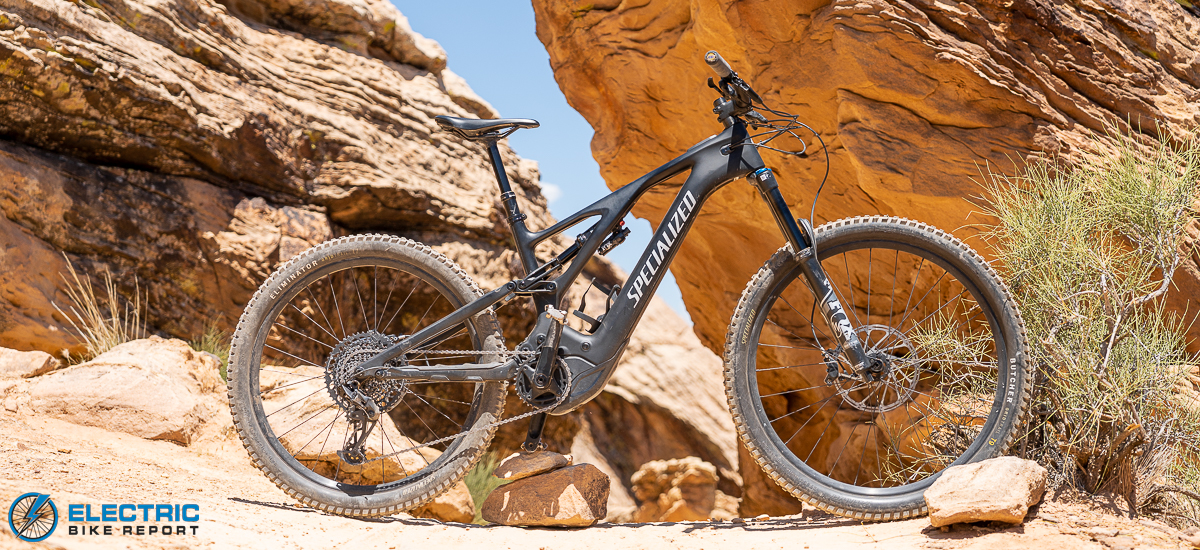
Specialized’s Turbo Levo has achieved something that’s no small feat. The Gen 3 model first debuted in 2021, yet even here in 2025, it remains one of the most sought-after eMTBs on the market.
The general consensus? It’s still one of the best e-bikes in the business.
Reaching the top is one thing—staying there is another. As Coach John Wooden once said, “When you’re at the top, you have to be careful, because the only way to go is down.” And yet, the Gen 3 is still more than holding its own. With the Gen 4’s debut possibly around the corner, we’re taking a different perspective on this Specialized Turbo Levo review. This time, we’re asking the questions:
- 1. Should you snag the Gen 3 or hold out for what’s next?
- 2. When a Gen 4 is launched, should you still consider the Gen 3 if it’s on sale?
To answer that, let’s look at what the bike still brings to the table. The Turbo Levo (across its many configurations—ours was the 2023 Comp Carbon) is a highly adjustable ride with a phenomenal frame, great suspension setup, and a motor that remains as impressive as anything we’ve pedaled. It’s a full-power eMTB with all-mountain capabilities.
Any of the big names in MTBs have solid geo on their bikes, but Specialized’s R&D is something you can feel. Every fraction of a degree and millimeter of tubing feels purposefully thought through, and it creates a ride that feels both stable and responsive. Whether you’re carving through corners or barreling through chunky downhill terrain, the Turbo Levo delivers.
Surprisingly, the bike feels poppy and playful, despite weighing around 50 lbs. The mullet setup adds to its lively, nimble nature, making it feel more agile than you’d expect from a full-power rig.
The custom Specialized 2.2 motor is among the most powerful on the market, but what sets it apart is how smooth and intuitive the power delivery feels. It builds speed naturally and tackles steep climbs with effortless and almost mind-reading control.
If we had one small knock, it would be the charging door, which first-time owners should take heed—its placement is likely to have at least one “oops!” moment. But beyond that minor gripe, this bike is a masterclass in execution—formidable for everyone from first-time e-MTBers to seasoned trail veterans.
And soon, if our prediction turns out to be true, it’ll also be one of the best bang-for-your-buck options out there.
 Pros
Pros- Elite motor performance. The motor has smooth, intuitive power that won’t catch you off guard on the trails. It excels in climbing and provides strong low-cadence torque.
- Highly versatile. The bike features 2.5 degrees of geo adjustment via a flip chip and other adjustments. You can rip through rowdy descents or carve tight singletrack with ease.
- Great for all skill levels. With adjustable suspension, a low step-over height, customizable geo settings, and a powerful yet controlled motor, it’s a solid choice for beginners and advanced riders alike.
- App & display fine-tuning. There are detailed customization options for dialing in ride preferences.
- It has a large battery that consumes power efficiently, and the weight displacement doesn’t affect the ride.
- Built to last. Durable construction backed by a solid warranty.
- Premium components across builds. Not the cheapest option, but no corners are cut—you get what you pay for (at full MSRP, impending next-gen bike likely to make this a full-blown steal with discounted pricing).
- Available in six sizes. Ensures a better fit for a wide range of riders.
 Cons
Cons- A minor gripe for purists, but the oversized BB isn’t the most aesthetically pleasing.
- The charge port door seals well but feels delicate while being located within striking distance of the crank.
- Battery: Specialized M3-700, Integrated battery, 700Wh
- Charger: Custom charger, 42V4A w/ Rosenberger plug, 100-240V
- Display: Specialized MasterMind TCU, percentage of remaining charge, 120 possible display configurations, MicroTune assist adjustment, ANT+/Bluetooth®, w/Handlebar remote
- Pedal Assist:
- Throttle:Trigger-control, removable
- App:Specialized
- UL Certification:UL 2849 & UL 2271
- Brakes:SRAM Code RS, 4 Piston Hyrdraulic (S/M: 200mm, L/XL 220mm rotors)
- Fork:Fox 36 Rhythm, 29″, S2-S6: 160mm S1: 150mm, Grip damper
- Shock:FOX FLOAT X Performance, LSR, 2-position lever, 55x210mm
- Linkage:Geo-adjust Horst Pivot
- Frame: FACT 11m full carbon, full internal cable routing, 148mm spacing, fully sealed cartridge bearings, 150mm of travel, geo adjust head tube
- Drivetrain:SRAM GX Eagle, trigger, 12-speed, single click, X01 derailleur, 32t chainring, 10-52t cassette
- Grips: Specialized Trail Grips
- Saddle: Bridge Comp, Hollow Cr-mo rails, 155/143mm
- Seatpost: X-Fusion Manic, infinite adjustable, two-bolt head, bottom mount cable routing, remote SLR LE lever, 34.9, S1: 100mm, S2: 125mm, S3: 150mm, S4/S5: 170mm, S6: 190mm
- Handlebar: 6061 mtn bars, 35mm diameter, 8 degree back sweep, 6 degrees up sweep, 800mm width. S1/S2: 30mm rise, S3-S6: 40mm rise
- Stem: Alloy Trail Stem, 35mm bar bore
- Cranks: Praxis forged M30, custom offset, 160mm
- Wheels: Specialized 29, hookless alloy, 30mm inner width, tubeless ready
- Tires: Front: Butcher, GRID GRAVITY casing, GRIPTON® T9 compound, 2Bliss Ready, 29×2.3″, Rear: Eliminator, GRID GRAVITY casing, GRIPTON® T9/T7 compound, 27.5×2.3″
- Hubs: Alloy, sealed cartridge bearings, 15x110mm thru-axle, 28h, Alloy, sealed cartridge bearings, 148mmx12mm thru-axle, 28h
- Spokes: DT Swiss Industry
Geometry
| Geometry | S1 | S2 | S3 | S4 | S5 | S6 |
|---|---|---|---|---|---|---|
| Crank Length | 160mm | 160mm | 160mm | 160mm | 160mm | 160mm |
| Handlebar Width | 800mm | 800mm | 800mm | 800mm | 800mm | 800mm |
| Stem Length | 40mm | 40mm | 40mm | 40mm | 40mm | 40mm |
| Saddle Width | 155mm | 155mm | 143mm | 143mm | 143mm | 143mm |
| Seatpost Length | 100mm | 125mm | 150mm | 170mm | 190mm | 190mm |
| Stack | 605mm | 617mm | 626mm | 635mm | 644mm | 653mm |
| Reach | 412mm | 432mm | 452mm | 477mm | 502mm | 532mm |
| Headtube Length | 105mm | 105mm | 115mm | 125mm | 135mm | 145mm |
| Headtube Angle | 64.5° | 64.5° | 64.5° | 64.5° | 64.5° | 64.5° |
| BB Height | 352mm | 350mm | 350mm | 350mm | 350mm | 350mm |
| BB Drop | 25mm | 27mm | 27mm | 27mm | 27mm | 27mm |
| Trail | 130mm | 130mm | 130mm | 130mm | 130mm | 130mm |
| Fork Length (full) | 557mm | 567mm | 567mm | 567mm | 567mm | 567mm |
| Fork Rake/Offset | 44mm | 44mm | 44mm | 44mm | 44mm | 44mm |
| Front Center | 738mm | 760mm | 784mm | 814mm | 843mm | 878mm |
| Chainstay Length | 442mm | 442mm | 442mm | 442mm | 442mm | 442mm |
| Wheelbase | 1179mm | 1200mm | 1225mm | 1255mm | 1284mm | 1318mm |
| Bike Standover Height | 752mm | 776mm | 783mm | 787mm | 788mm | 790mm |
| Seat Tube Length | 380mm | 390mm | 405mm | 425mm | 445mm | 465mm |
| Seat Tube Angle | 78° | 77.2° | 76.7° | 76.2° | 76.2° | 76.2° |
| Max Seatpost Insertion | 210mm | 220mm | 240mm | 255mm | 275mm | 295mm |
| Min Seatpost Insertion | 80mm | 80mm | 80mm | 80mm | 80mm | 80mm |
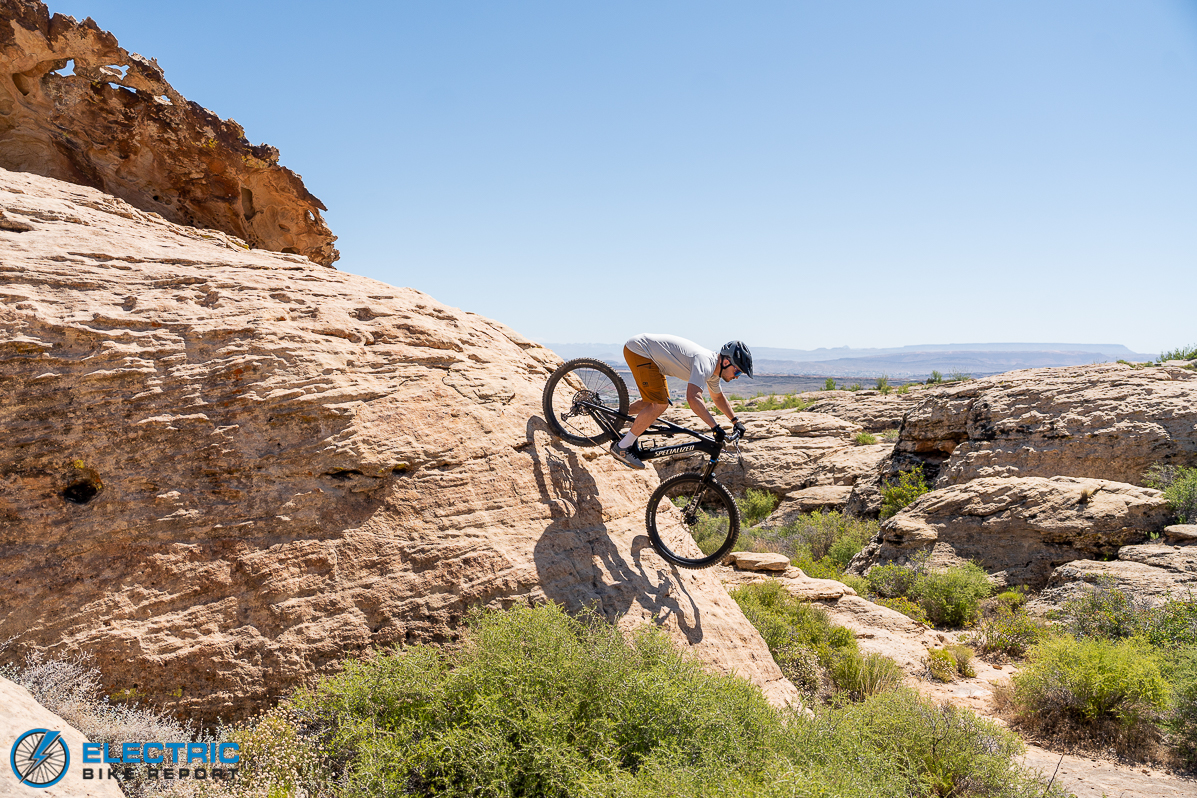
The Turbo Levo can seemingly do a bit of everything. Take drops with confidence, or just enjoy the lively nature carving through singletrack.
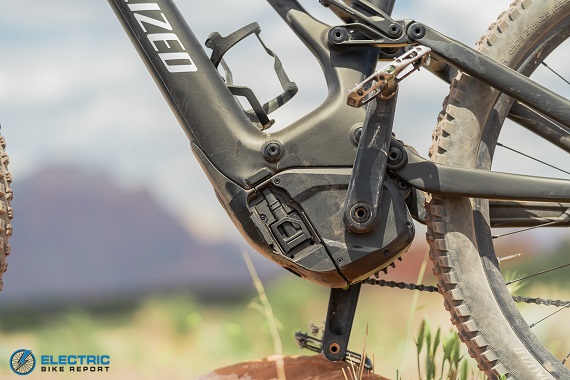
The custom Specialized 2.2 motor isn’t in the top tier for “punchiness,” but it’s tier two at least, while being one of the best feeling in terms of power engagement of any motor we’ve ridden.
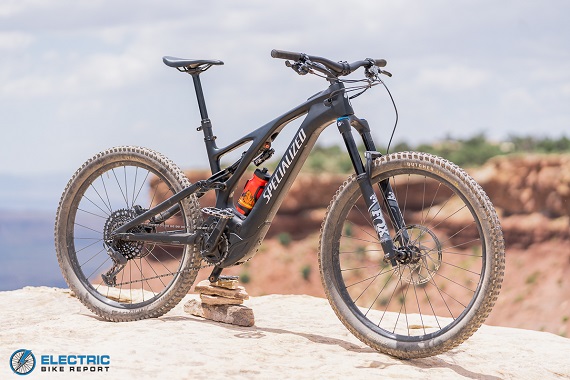
We are big fans of the mullet setup. The 27.5” wheel in the rear in conjunction with shorter chainstays, give the bike an overall lively nature.
Specialized Turbo Levo Gen 3 Review: Motor & Battery
The Brose-made, Specialized-tuned 2.2 motor goes toe-to-toe with anything on the market. It keeps weight low at just 4.9 lbs, provides up to 400% assistance, 565 peak watts (250W nominal) and wields its 90Nm of torque masterfully—whether you’re accelerating from a stop or grinding out the final stretch of a climb.
Let’s focus on its torque for a moment. One of the motor’s standout abilities is its low-cadence torque. Picture a scenario where you’re starting out in too small of a gear—most motors won’t give you enough power because you don’t have enough RPMs. Worse, some torque sensors detect the added strain and overcompensate by surging forward with too much power. The 2.2, however, ramps up smoothly, making it great for getting moving from a near standstill or delivering just the right amount of assistance to finish a climb.
Yamaha motors tend to be punchy at the start but taper off, while Bosch motors can be slow to engage at low cadences before delivering a lot of power all at once. The 2.2 motor finds the sweet spot—it’s a Goldilocks scenario: just right.
But its strengths don’t stop at low-cadence scenarios. Power delivery remains smooth and consistent throughout. There are no unexpected surges, and the controlled application of power shines in technical terrain, making root- and rock-filled climbs more manageable.
There’s also plenty of top-end power. We haven’t encountered a reasonable hill the Turbo Levo couldn’t handle, meaning fewer stops and less hike-a-biking—just more time riding and having fun.
A unique feature of the Turbo Levo is its micro-adjustment power levels that you can execute on the fly. Most eMTBs offer basic Low, Medium, and High settings, with some including an auto mode that adjusts dynamically. The 2.2 motor has similar presets (Eco, Tour, Turbo), but it also allows riders to fine-tune power in 10% increments via the control pad. It’s not a necessity to use, but for those who notice and appreciate small differences in power output, this fine-tuning is a great tool to have on the fly, with the ability to pop into the app and further tune there as well (more on that in a minute).
The previous 2.1 motor had a few notorious durability issues, but Specialized made sure history wouldn’t repeat itself. They reinforced the internal components with stronger, wider belts, making them more robust. Several years in, the 2.2 motor has held up well, showing no widespread reliability concerns. It appears Specialized successfully addressed past issues.
The bike runs on a 700Wh battery. Unlike some full-power eMTBs where the downtube looks excessively bulky, the Turbo Levo integrates its battery cleanly. The chunky bottom bracket, while beneficial for keeping weight low and centralized, is a bit polarizing. It’s a win for handling, but opinions on its aesthetics remain divided.
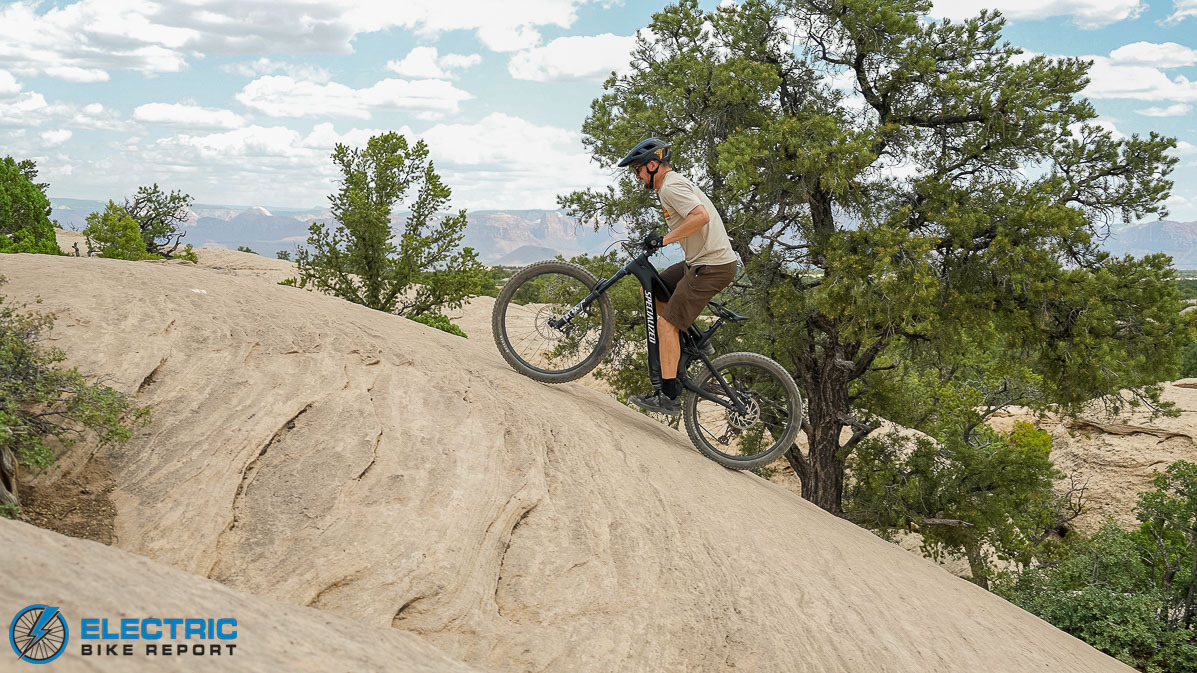
We could feel the 90nm of torque when climbing super steep slabs at Gooseberry mesa..
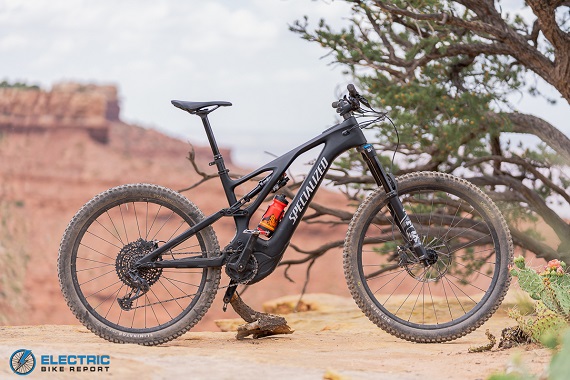
Specialized offers the Turbo Levo in six(!) different frames, so riders can find an ideal fit. As a further bonus, there’s up to 2.5 degrees of headtube adjustment as well.
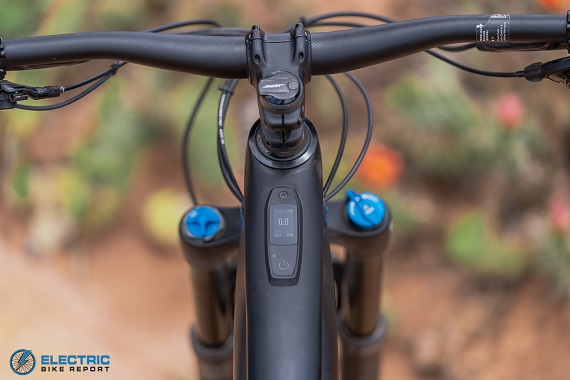
The MasterMind TCU display integrates nicely along the top tube and provides clear readouts that are easy to see at a glance.
Specialized Turbo Levo Gen 3 Review: Display & App
Two standout features define the Turbo Levo’s ecosystem: on-the-fly tuning and app customization.
The stock three power settings worked well for us, but riders who want finer control can adjust power in 10% increments mid-ride by long-pressing the control buttons. Different trails call for different levels of assistance, and tweaking power output without pulling out your phone is a unique benefit.
But man, the app takes customization to another level. The three power settings have three overarching power profiles—Universal, Racing, and Battery Friendly—that you can choose from. Or, you can adjust the three power modes how you see fit to fine-tune overall power output and engagement levels to your preference.
Beyond power adjustments, the app offers enhanced security options and trip-planning tools. A unique feature lets you set a desired ride distance, and the bike automatically regulates power to ensure you have enough battery to complete it. Want to cover 50 miles in a day? Let the bike handle the power management, and you can focus on the ride without fear of having to hoof out the last few miles on a dead battery.
Specialized Turbo Levo Gen 3 Review: Range Test
In Eco mode, the Turbo Levo covered 51.92 miles and climbed over 5,000 feet of elevation while staying in its stock power configuration. When we ran the test again in Trail mode, with access to a bit more power, it managed 39.43 miles on a single full charge.
That’s solid mileage for a high-output motor, and we suspect it would still reach close to 30 miles if ridden exclusively in its max power setting like we’ve tested other bikes.
When we tested the bike’s feature for meeting preset mileage, we found it a bit conservative at first, delivering less power in the early miles. But once the system calculated that there was enough battery to complete the ride, it increased output in the second half, making a 50-ish mile ride feel easier by cranking out more watts. Overall, it’s a handy tool for riders planning longer adventures.
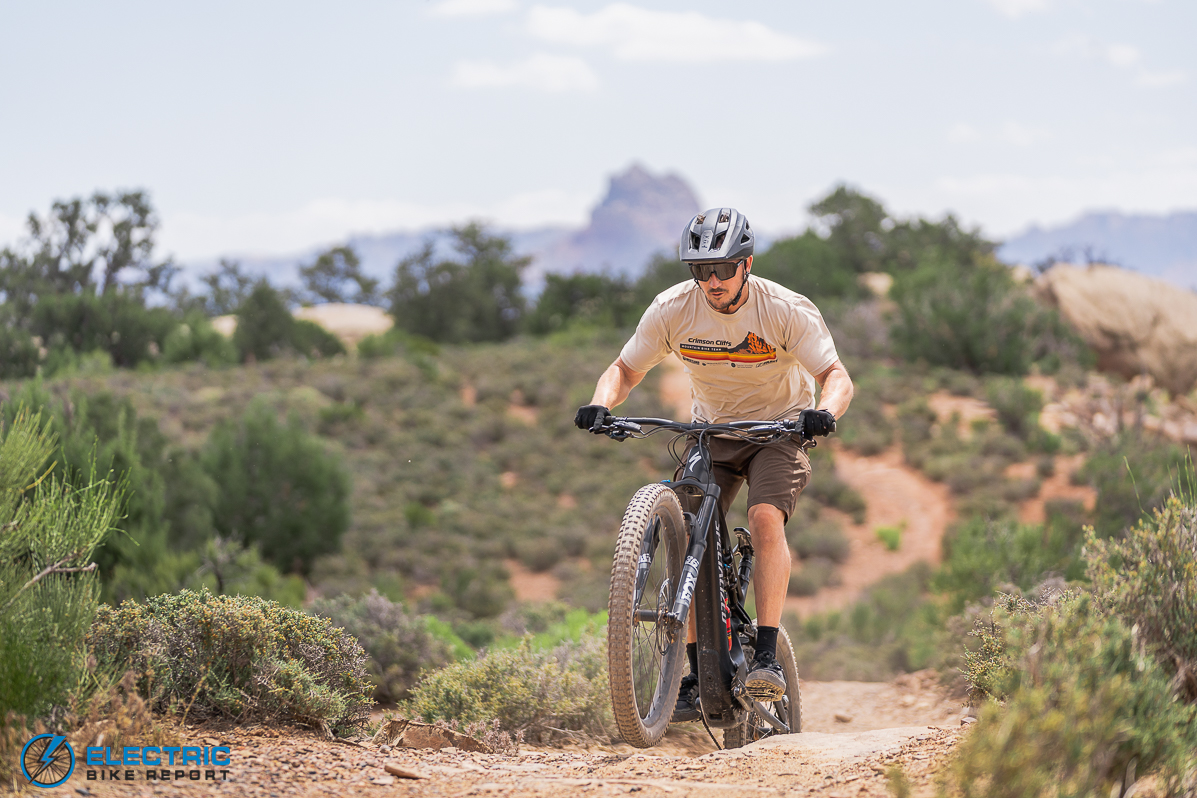
The Specialized Turbo Levo has exceptional build quality and can handle most anything you throw at it.
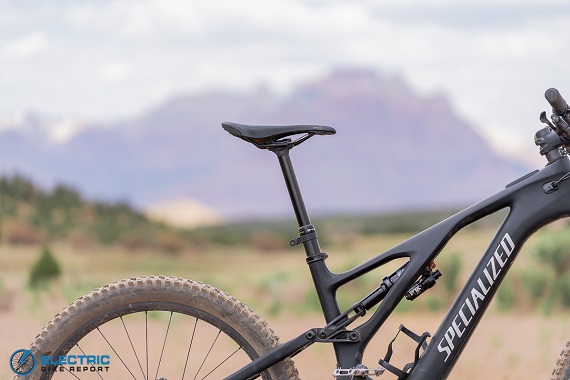
The X-Fusion Manic dropper post works reliably, and we love how diverse the travel length is across the frame sizes (between 100-190mm).
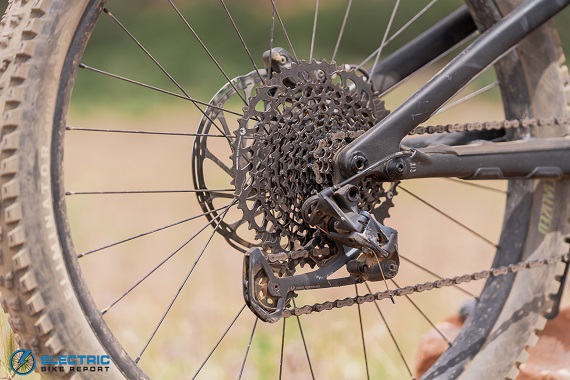
520% range of the SRAM Eagle groupset means you’ll have a gear for just about any scenario. However, there aren’t many scenarios where we actually use the eagle gear and generally find us using the 2nd or even 3rd largest cog for climbing even super techy sections.
Specialized Turbo Levo Gen 3 Review: Hill Test
On Hell Hole, the Turbo Levo reached the top in 1:20, averaging 13.6 mph. As of this writing, eMTBs, on average, complete the climb in 1:30 at 12.2 mph. Over on the Water Tower climb, the results were similar—3:35 to the top, averaging 14.5 mph. That edges out the current average of 3:39 at 14.4 mph.
The 2.2 motor performs above average, delivering noticeable bursts of power that make short climbs feel quick while sustaining long, drawn-out ascents at a strong pace. Speed is a useful benchmark, but what really stands out is how intuitive and responsive the motor feels. That’s the part we still geek out about most.
There really isn’t a hill we don’t trust this bike on. It has all the peak power capabilities you’d need for any situation, but what sets it apart is how well it adapts to the terrain. It syncs effortlessly with the rider’s needs, making climbs feel more natural and controlled rather than just brute-forced.
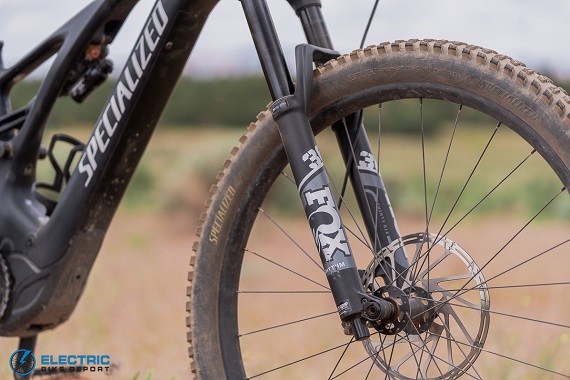
While the Fox 36 feels smooth and sturdy, we would appreciate a bump up in spec to a Fox Factory fork at the MSRP price point.
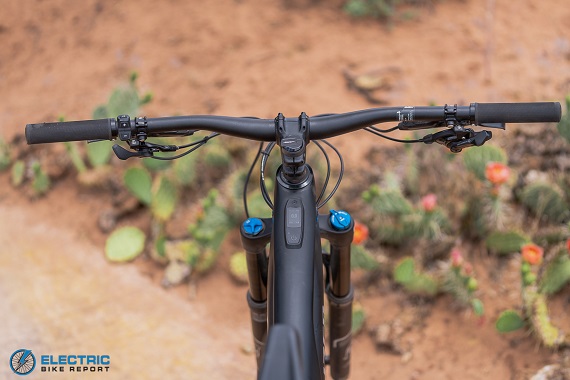
The cockpit was really inviting. It’s clean and minimal, and the stack height is a few mm higher than most frames of this size, making you feel more comfortable while riding.
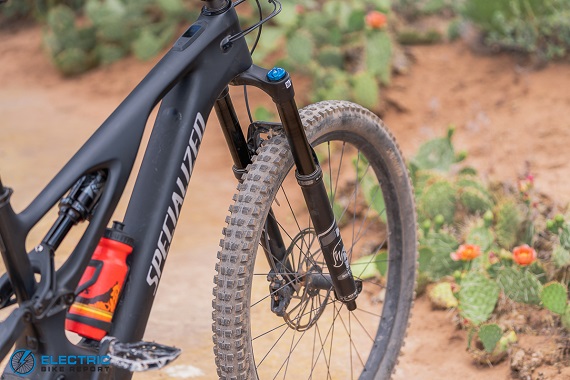
The 160mm travel was plenty for most of our riding, but riders with more downhill riding in mind should look to the Turbo Kenevo for more travel.
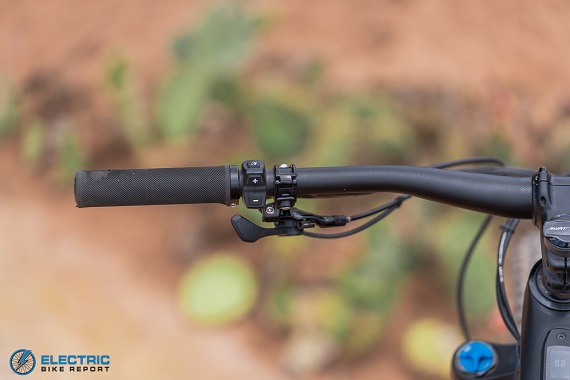
The control pad is where you can use the MicroTune feature for smaller power changes than the typical three factory settings.
Specialized Turbo Levo Gen 3 Review: Ride Quality
The geometry is outstanding. The wheelbase and chainstay length strike a perfect balance between stability and maneuverability, while the smaller 27.5” rear wheel makes the bike feel snappy and playful. You can carve through trails with ease, and the rear end responds effortlessly to every movement.
The combination of the wide 800mm bar, 477mm reach, and 635mm stack height (of our S4 frame) provides an excellent platform for rider weight distribution, further enhancing the bike’s grounded and stable feel.
There’s also plenty of adjustability. The head tube angle can be set between 63 and 65.5 degrees, and the bottom bracket height can be tuned up or down by 7mm. Whether you want a more trail-friendly setup or a slack, enduro-ready ride, it’s entirely up to you—we’re mostly in enduro country.
The 150mm rear / 160mm front suspension setup offers outstanding versatility for all-mountain riding. Dial it in for a plush, forgiving feel over rough terrain or stiffen it up for a more responsive and aggressive ride. The Fox suspension components work well and we had virtually zero complaints.
The stock tires roll fast and provide solid traction. Wider tires could further improve stability for enduro riders and offer better float on softer terrain, but as far as stock setups go, they perform well. However, the bike doesn’t allow for a full 29er conversion, meaning you’re locked into a mullet setup—like a late ‘80s Billy Ray Cyrus haircut. Most of our team prefers it this way, though some lament the lack of 29” compatibility—to each their own.
The brakes on our slightly older test bike (SRAM Code R) have since been upgraded to Maven Rs. From our experience testing Mavens on other bikes, we know they deliver incredibly powerful stopping force with great modulation. The switch to mineral oil over DOT fluid should also result in fewer required service intervals.
Specialized backs its products with a lifetime warranty on the frame and two years on the motor and battery. Their nationwide support network ensures easy access to servicing and repairs, adding peace of mind to an already well-rounded package.
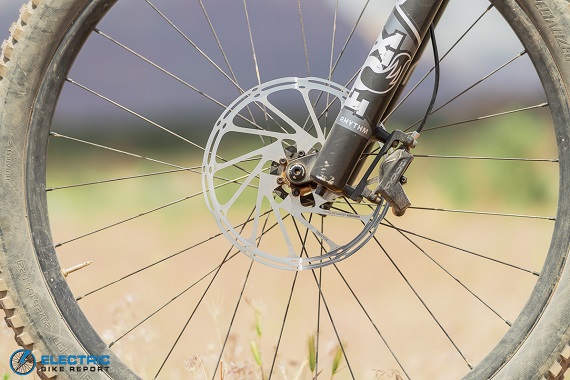
We’ve been happy with the performance of our SRAM Code R brakes, but the newly spec’d Maven’s should provide even greater stopping power.
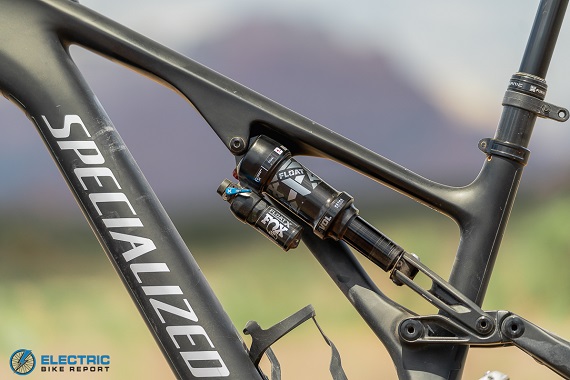
Overall the rear linkage and shock work well and allow you to dial in your preferences nicely.
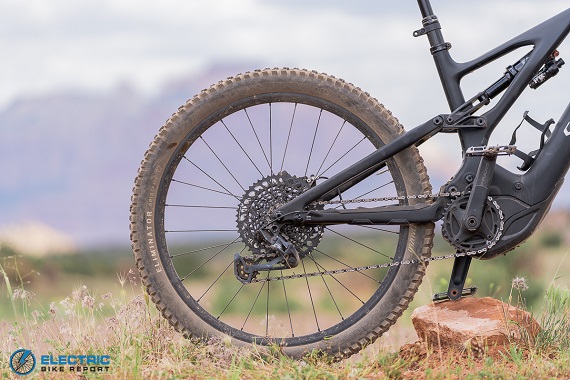
The tires have good traction and hold speed well. We wouldn’t mind something slightly wider than 2.3’s for some of the soft sands of our local terrain though.
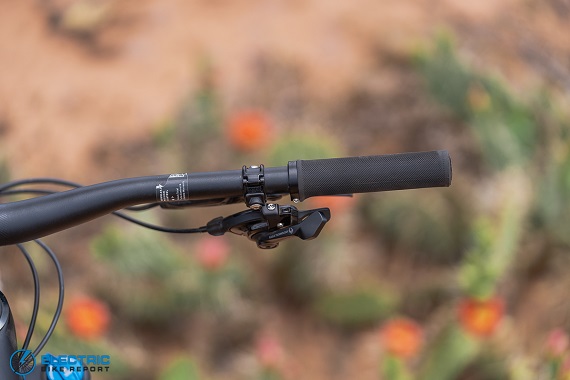
The SRAM Eagle GX Shifter works reliably, and the grips have held up well too.
Specialized Turbo Levo Gen 3 Review: Summary / Where to Buy
The motor is terrific, and while we’re speaking marginally here, it’s probably the best we’ve experienced in terms of combining power and natural feel—It’s truly terrific, and it can be set up exactly how you would like it to respond.
The bike is surprisingly playful. Thanks to the high degree of adjustment with the flip-chip and other adjustments you can make to the geo, it can be a weapon on the downhills or a plush and easy-going trail ride.
Do I think the Gen 4 will be the better bike? Probably, but likely just marginally so. It, like the MSRP of the Gen 3, will likely be worth every penny. But with an abundance of Gen 3 still available and lower-than-MSRP price tags now part of the equation, I don’t think you’ll encounter much FOMO should you decide to go for the better deal; the Gen 3 is a stellar bike that riders will thoroughly enjoy.
Happy Riding! Make sure to let us know if you have any questions or if you think we left anything out in this review of the Specialized Turbo Levo down in our comments section.




Bike is heavyweight when pushing it by foot on a hill. Beside that, great bike, holding it for 4 years now